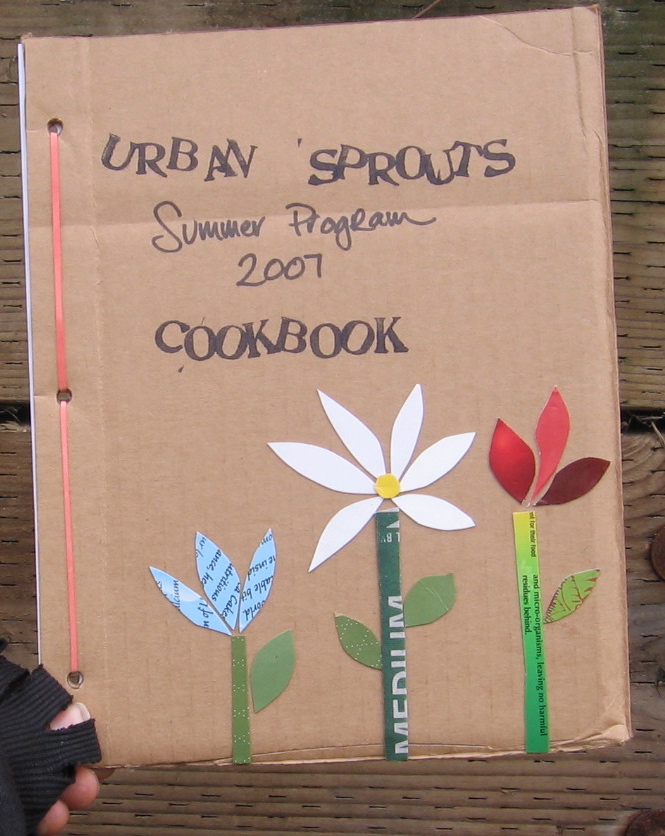- Not guessing what works – existing theory and the body of knowledge from multiple fields inform our work.
- A recipe for success – what ingredients we must add in order to get the outcomes we desire.
- Evidence of outcomes – Inputs and outcomes are tested by research and evaluation to show impact in the real world.
- A Measurement tool – The model guides all our practices, shows how well we’re doing, and tells us where to make improvements at every step.
Urban Sprouts’ program model was created by Dr. Michelle Ratcliffe. In fact, Dr. Ratcliffe's doctoral research project marked our beginning. The program model demonstrates the links between individual behavior changes that school gardens inspire and the larger impacts on families, schools and communities. The model is based on three elements: a young person’s internal strengths, the school and home settings around her, and her own actions, and, finally, how these three interact to create a healthy or unhealthy community. We don't think of the garden as an input and eating healthy as an output. Instead, the garden (an environment), a person's internal strengths, and a person's behaviors all reinforce each other to make people and the community better.
 Specifically, Urban Sprouts’ school gardens give youth the knowledge and motivation to eat more fruits and vegetables (behaviors), as well as the ability to grow them (affecting the environment). Our programs also teach confidence and leadership (internal strengths) and help youth to identify problems in their communities – like a lack of fresh produce for sale at neighborhood stores – that are barriers to making healthy choices (environment). This program model shows that the garden goes beyond the individual to also have community-level impacts that create broader social change.
Specifically, Urban Sprouts’ school gardens give youth the knowledge and motivation to eat more fruits and vegetables (behaviors), as well as the ability to grow them (affecting the environment). Our programs also teach confidence and leadership (internal strengths) and help youth to identify problems in their communities – like a lack of fresh produce for sale at neighborhood stores – that are barriers to making healthy choices (environment). This program model shows that the garden goes beyond the individual to also have community-level impacts that create broader social change.In more detail, our program model lays out all the elements that the school garden environment must have in order to actually impact students' internal strengths and their behaviors. These elements fall into three categories: the physical, curricular and social learning environments. Click on this simplified version of model (below) to see it larger.
 Make sense? We have a fun and interesting presentation that lays out the theoretical background and engages the audience with the model in all its detail. If you're interested in learning more, drop us a line and it will help us plan future trainings for the public here in San Francisco.
Make sense? We have a fun and interesting presentation that lays out the theoretical background and engages the audience with the model in all its detail. If you're interested in learning more, drop us a line and it will help us plan future trainings for the public here in San Francisco.gbemodel
evaluation









No comments:
Post a Comment